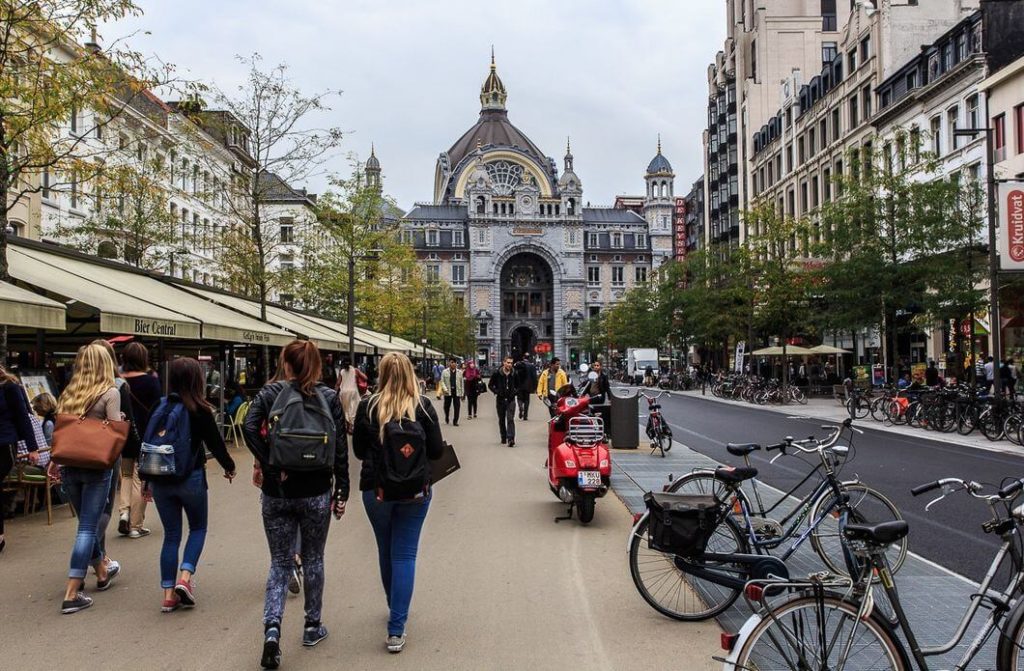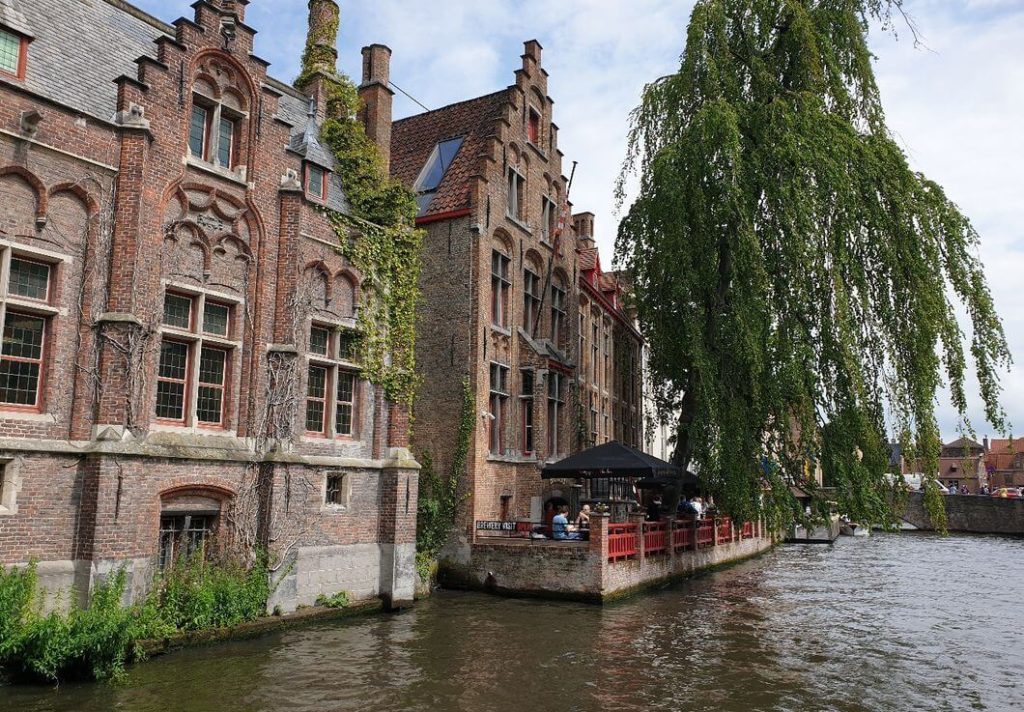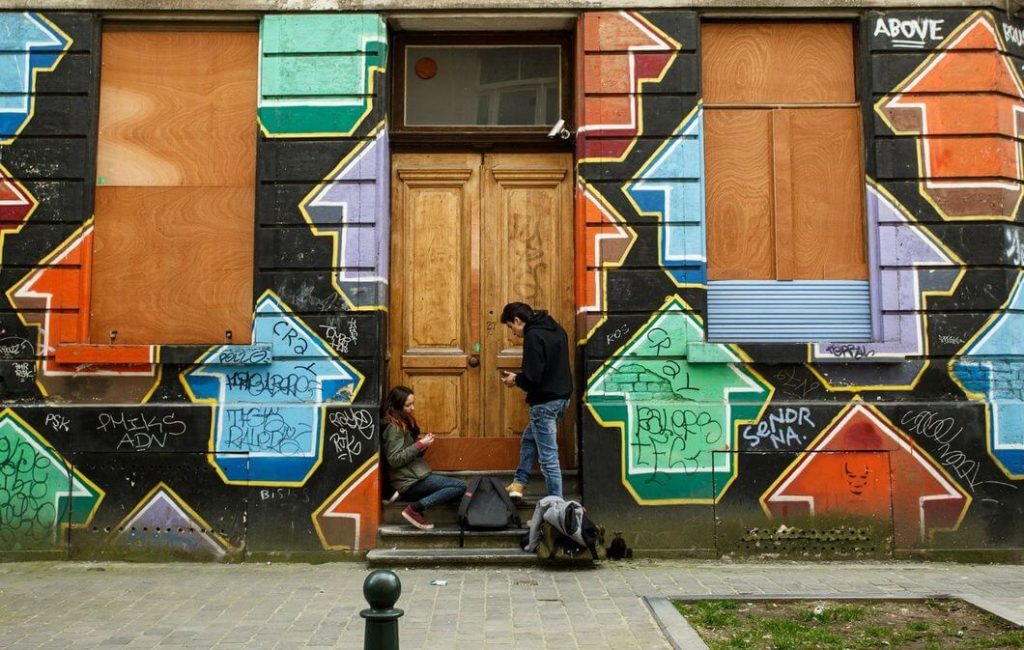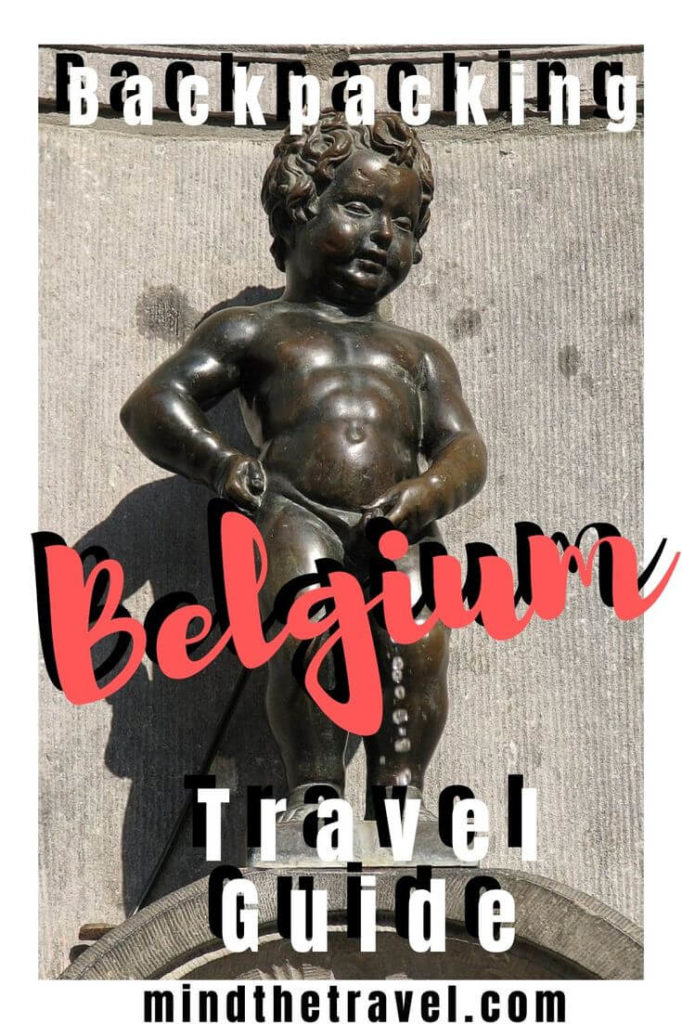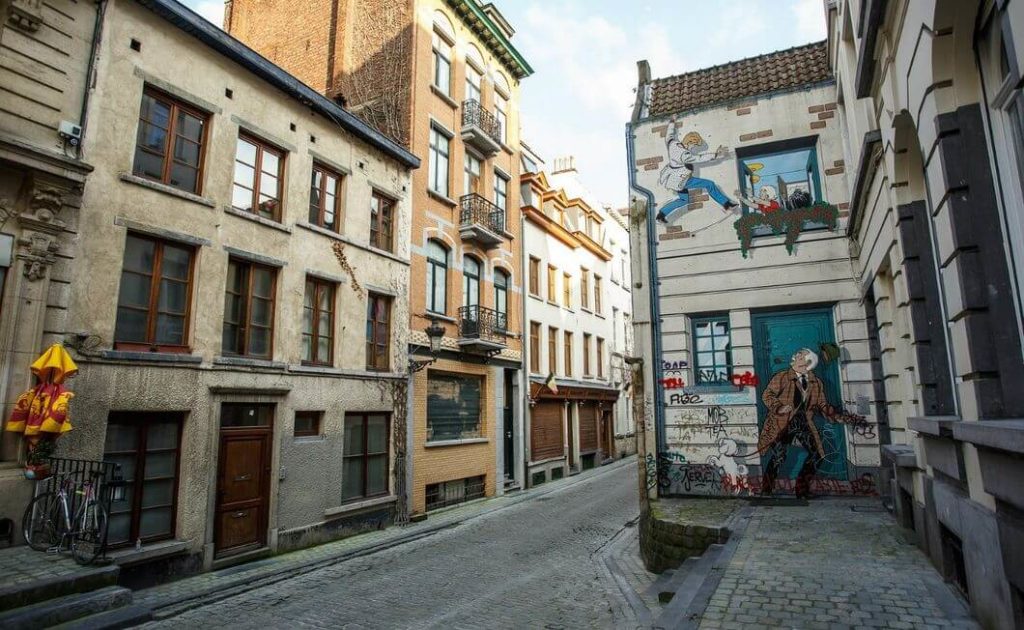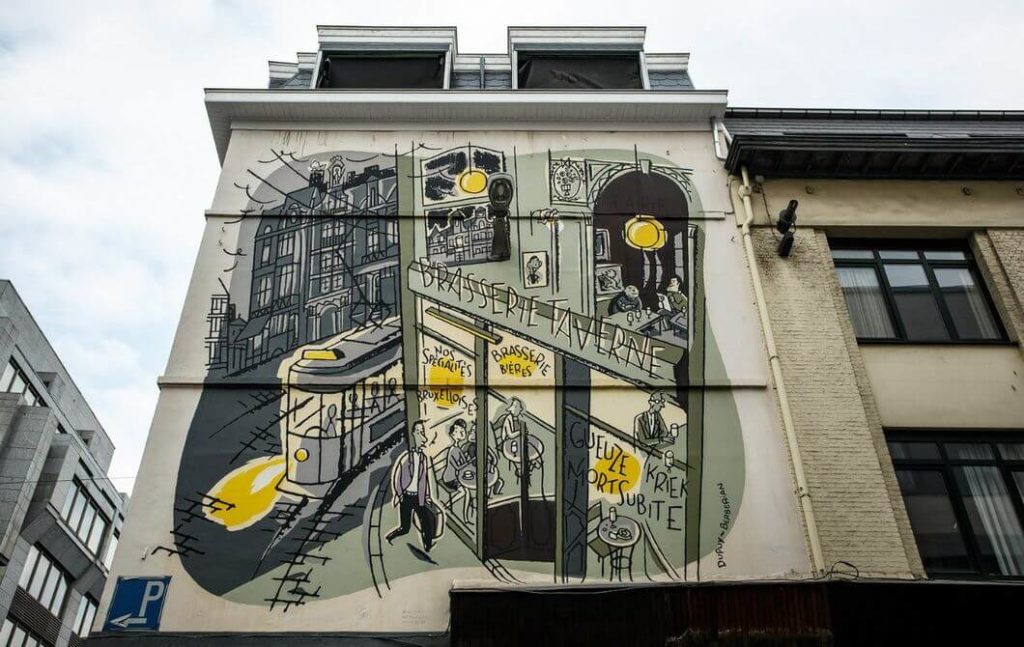Backpacking Belgium Travel Guide: Best Things to Do and See in Belgium On a Budget
Visit the European Parliament
Brussels is not only the capital of Belgium but the capital of the European Union. The glass-mirrored Brussels Parliament building impresses with its size and always looks different, depending on the weather. There are not only conference rooms inside, but an information center, where every citizen of the European Union can get a souvenir booklet in any of the European Union’s 24 official languages.
Eat Your Way Through Belgium
With so many different types of waffles, chocolate, and french fries in Belgium it can be hard to avoid gluttony. Despite being a small country, Belgium is home to many culinary magicians. On a sunny day, there’s nothing better than sitting outside with a plate of fries and lager beer.
Take a Canal Tour in Bruges
No doubts, Bruges is one of the most amazing cities in Belgium known also as The Venice of the North. So if Bruges is on your bucket list, be sure to take a canal trip down the cozy waterways. Don’t miss the belfry of Bruges to see the city from a bird’s eye view and search the outskirts of the city for the windmills of Bruges. Yup, not just the Netherlands has these!
Hug the Leaning Tower of Pisa and see the Vesuvius in Brussels
Located just a stone’s throw from the Atomium, Mini-Europe park is a great spot to enjoy the reproductions of the most prominent buildings, trains, mills, and cable cars in Europe. Here you can see the Acropolis, Santiago de Compostela Cathedral, the Eiffel Tower, Big Ben, all 1/25 scale models. This is a perfect chance to walk around and make your ultimate Europe bucket list.
Take a Ride Across Tiny Towns
There are a lot of picturesque towns outside the capital, so getting lost in Belgium is always a good idea. Such cities like Liege, Ghent, Leuven, Ostende are usually overlooked compared to Brussels. But they have so much charm and see fewer visitors. Consider hitting these cities during summer months when the cultural outdoors festivals are in full swing.
Venetian Carnival at Annevoie Gardens
The annual Carnival at Annevoie Gardens in Wallonia is a place where people parading past in full Venetian Carnival costumes. I still don’t entirely understand what do Venetian Carnival costumes have to do with a castle garden near Dinant, but I definitely recommend seeing it at least once. However, if you miss the carnival, there is a great park to enjoy. English garden, fountains, tiny waterfalls and a castle with a moat.
The Carnival of Binche
Closely related to Catholic Easter celebrations, the Binche Carnival is an important event and the highlight of the year for people living in Binche. The villagers prepare the Binche Carnival for several months, while the actual carnival with over 1000 Gilles marching as a grand finale.

Caves of Han-sur-Lesse
On the outskirts of the village of Han-sur-Lesse, there are the most beautiful limestone caves in Western Europe. The only way to get there is by riding a century-old tram that departs from the village.
Having an impressive historical background, it will take about two hours to see it all, including a sound and light show in one of the largest chambers of the cave. Be sure to get yourselves bundled up in some warm clothes, as the caves have a constant temperature of 13 °C (55 °F) and a high level of humidity. The prices start from €10.
Ride a Beer Bar Bike
If you travel with a group of friends and want to have some fun riding a beer bike can be something you’re looking for. A party bike or a beer bike is a multi-passenger human-powered vehicle with a driver to ensure the safety of everyone on board. Riding a party bike is fun and allows you to kill two birds with one stone – do some sightseeing and get some cold beer. You are guaranteed to receive admiring glances from passers-by.
Locate the Craziest Sculptures
Belgium has a lot of weird, creative and funny statues. If you love Manneken Pis and Jeanneke Pis, two iconic sculptures in Brussels, you will certainly find enthralling locating the other sculptures spread all over the country. A humorous sculpture of a policeman being tripped by a man I found in Sint-Jans-Molenbeek.
Explore Walls of the Old Town
Brussels like other medieval cities has the old town wall. You can either spend the day exploring it or visit just a part of the wall from Grand Sablon to Sainte Catherine spending just a few hours. Some part of the wall that dates back to the 12th century can still be clearly visible, while other parts are hidden beneath the new buildings and smaller streets. The set of boulevards where the wall once was have a line on the ground marking where it used to be. Follow the line and discover Old Brussels without spending a single euro.

Take a Comic Strip Wall Tour in Brussels
Brussels has a long tradition of murals and comic books. There are two museums that can introduce you to the history of the comics: the Belgian Comic Strip Center and the Museum of Original Figurines. Both charge an entrance fee, but you can take a stroll and explore the murals in Brussels in a different manner. With about 35 murals around the city they make up a Comic book route in Brussels, including such comics as Tintin, Nero and Asterix displayed on walls all over the city.
La Cambre Abbey
La Cambre Abbey today is a Catholic parish located near the Sonian forest just 5 km away from the St. Nicholas Church. This is a perfect place to escape the hustle and bustle of the city. With the Belgian National Geographic Institute and La Cambre visual arts school nearby, both the Church and Garden can be visited for free. Great place to think on eternal things.
Explore Brussels with a Local
Take a free walking tour around the city, explore off the beaten path sights and spots only locals know. Local guides are often very knowledgeable, enthusiastic and telling interesting stories in a hilarious way. They will guide you through the city and take you to places they love and think you should know about. And often these are cool places difficult to find elsewhere.
People watching at the Markets
Brussels markets are great for people watching. You can easily find Sint-Gorikshallen or the Brussels Vintage Market near Arteveld street. It is open every first Sunday of the month offering a wide range of vintage and second-hand clothing, trinkets, accessories, and small furniture.
The Marolles flea market in the Jeu de Balle Square can easily be found not far from the Palais de Justice. With convenient operation, hours from 6 am to 2 pm on weekdays and from 6 am to 3 pm on weekends it’s a great place to purchase pretty much anything – from old maps to washing machines.
Pay a Visit to Waterloo Battlefield
If you’re a history buff you shouldn’t miss this place. The battlefield is only a short, 20-minute drive from Brussels got its name from the Belgian location where Napoleon was defeated in 1815. There are two sections – the underground museum that will you take on a journey through time to discover the Panorama that depicts several scenes of the battlefield.
The second section is the Lion’s Mound itself. Erected on top of the mound a lion symbolizes protection of the newfound peace in Europe. Going up the 226 stairs gives you an amazing view of the gorgeous farmland. There are guided tours available that can give you more in-depth information about the battle. Alternatively, you can go the cheaper route and stay on-site where you can climb the hill, visit the museum and Napoleon’s headquarters.
